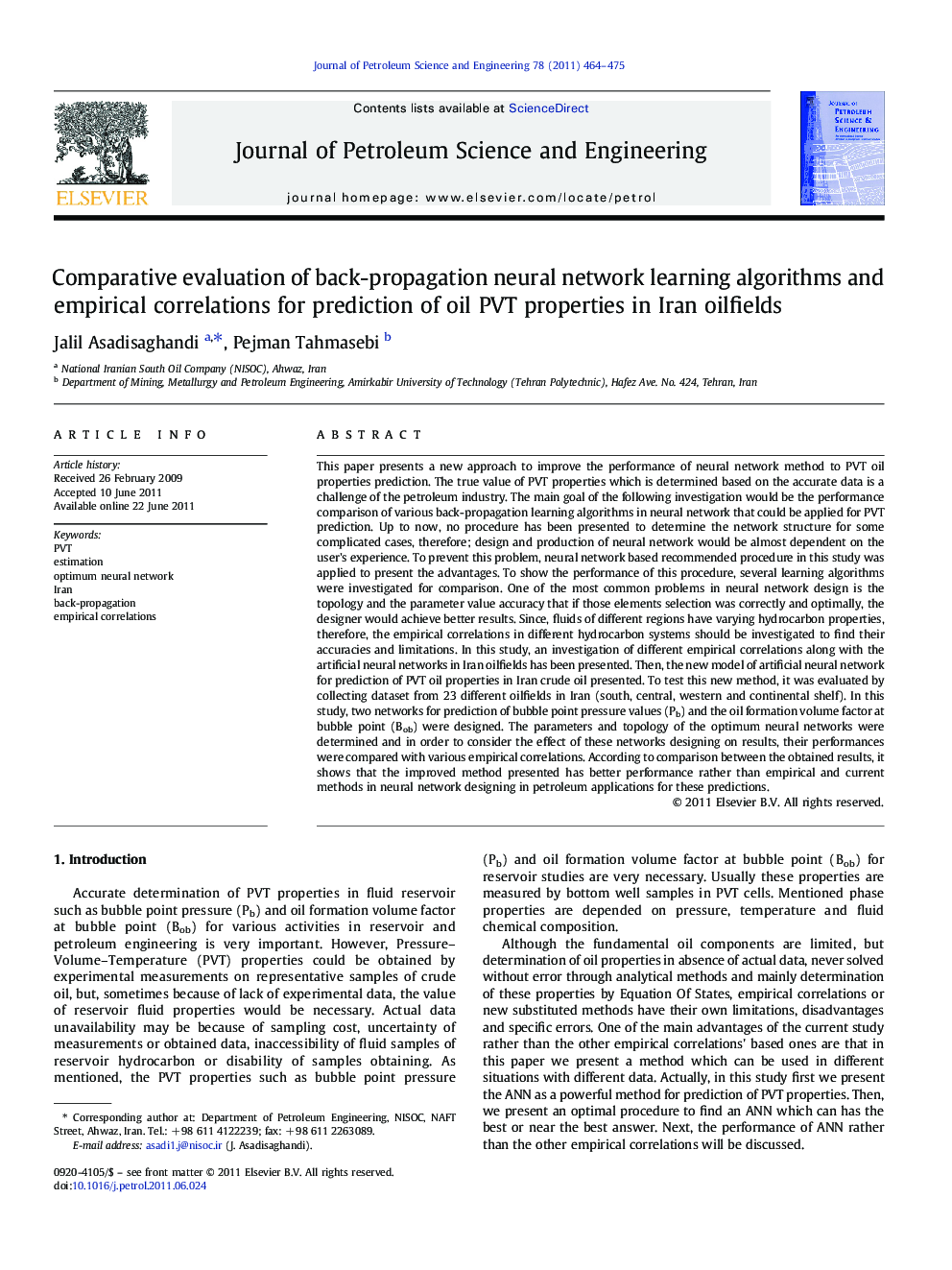| Article ID | Journal | Published Year | Pages | File Type |
|---|---|---|---|---|
| 1755648 | Journal of Petroleum Science and Engineering | 2011 | 12 Pages |
This paper presents a new approach to improve the performance of neural network method to PVT oil properties prediction. The true value of PVT properties which is determined based on the accurate data is a challenge of the petroleum industry. The main goal of the following investigation would be the performance comparison of various back-propagation learning algorithms in neural network that could be applied for PVT prediction. Up to now, no procedure has been presented to determine the network structure for some complicated cases, therefore; design and production of neural network would be almost dependent on the user's experience. To prevent this problem, neural network based recommended procedure in this study was applied to present the advantages. To show the performance of this procedure, several learning algorithms were investigated for comparison. One of the most common problems in neural network design is the topology and the parameter value accuracy that if those elements selection was correctly and optimally, the designer would achieve better results. Since, fluids of different regions have varying hydrocarbon properties, therefore, the empirical correlations in different hydrocarbon systems should be investigated to find their accuracies and limitations. In this study, an investigation of different empirical correlations along with the artificial neural networks in Iran oilfields has been presented. Then, the new model of artificial neural network for prediction of PVT oil properties in Iran crude oil presented. To test this new method, it was evaluated by collecting dataset from 23 different oilfields in Iran (south, central, western and continental shelf). In this study, two networks for prediction of bubble point pressure values (Pb) and the oil formation volume factor at bubble point (Bob) were designed. The parameters and topology of the optimum neural networks were determined and in order to consider the effect of these networks designing on results, their performances were compared with various empirical correlations. According to comparison between the obtained results, it shows that the improved method presented has better performance rather than empirical and current methods in neural network designing in petroleum applications for these predictions.
► A general methodology for finding an optimal neural network is presented. ► The methodology is implemented for prediction of PVT properties. ► The methodology is compared with some empirical methods. ► Results shown the superiority of neural network to other empirical methods.
